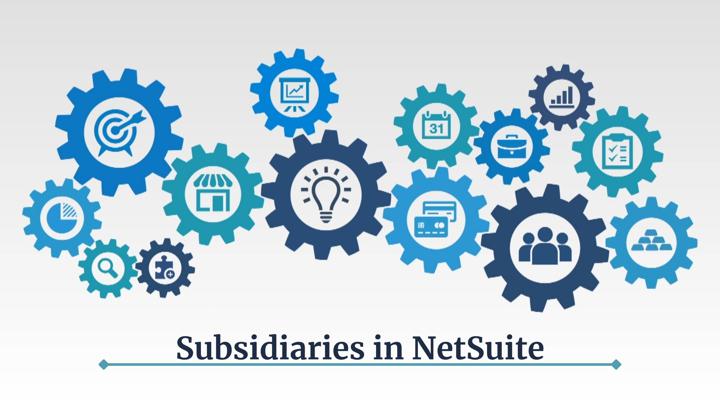
What does NetSuite mean by these classification terms, and how should my company use them?
NetSuite is primarily built for medium-to-large sized businesses. What this means is that NetSuite offers a number of features for organizing complicated businesses with lots of moving parts. There is even the ability to have one part of your business sell products or services to another part of your business!
Having lots of tools to delineate a strong organizational structure is powerful, but it can also be overwhelming, especially if you are new to NetSuite. If you’re not sure what the difference is between a “class” and a “subsidiary”, don’t worry; you aren’t the first one to wonder! Although NetSuite provides these terms, they sometimes don’t provide much guidance for how you are supposed to apply these terms to your business. That’s what this article is for!
What follows are some general guidelines and best practices for divisions of your business in NetSuite.
There are four main divisions/terms NetSuite provides natively for organizing a business: Subsidiary, Department, Class, and Location. We’ll take each of them in turn.

A Quick Note on Labels
It is worth noting that NetSuite allows you to change the labels of these organizational terms. For instance, you could call Departments “Divisions” and Classes “Markets” if you prefer. However, I would caution you against making those label changes without compelling reasons, as it can make it more difficult to communicate with outside consultants or to follow help documentation written by NetSuite in the future, as now you and your employees need to remember to mentally translate “Department” and “Division.” A little bit of employee retraining now to standardize use of the default NetSuite terms can pay dividends later.
.
Subsidiary
Subsidiaries are for indicating separate, hierarchical legal entities, each of which is its own distinct company. In order to use multiple subsidiaries in NetSuite, you will need to have a special license called NetSuite OneWorld.
If your business is only one legal entity, and you don’t even have OneWorld, you can just skip this section. Yay!
Now, just because you do have OneWorld or because you have multiple LLCs or S-Corps under one umbrella, that does not necessarily mean you would benefit from having multiple subsidiaries in NetSuite.
Ask yourself this question... Do your businesses in practical matters act like one business or like multiple businesses? For instance, if your business was actually composed of two businesses owned by a parent entity, but those two child businesses are mainly only distinct legally, and not in day-to-day operations, you might not want to separate them out as distinct subsidiaries.
Another way to ask the same question: Would your typically employee be able to tell on any given day which subsidiary he is working for? If not, then maybe you don’t need multiple subsidiaries.
.

One Subsidiary
One reason to keep things simple with one subsidiary, when possible, is that it can often make bank reconciliation and other accounting processes easier for your accountant. This is especially true if you were thinking of sharing bank accounts between two subsidiaries; that sharing can become quite an end-of-month hassle, and makes it more difficult to use helpful automation tools like bank feeds.
Multiple, Hierarchical Subsidiaries
Now, if the company that uses NetSuite is a holding company with two very distinct child companies, say a bubble gum manufacturing company and a bicycle retail company, each with its own website and its own bank accounts and its own headquarters with its own tax nexus, that would start to look like a situation that would benefit greatly from NetSuite’s hierarchical structure of subsidiaries.
You would end up, in this case, with something like this:
1. Subsidiary 1: Parent Company
. . . . . . . . . . a. Subsidiary 1.A: Bubble Gum
. . . . . . . . . . b. Subsidiary 1.B: Bike Retail
. . . . . . . . . . . . . . . . . . . . i. Subsidiary 1.B.a: Bike Retail - USA
. . . . . . . . . . . . . . . . . . . . ii. Subsidiary 1.B.a: Bike Retail – Europe
. . . . . . . . . . . . . . . . . . . . iii. Subsidiary 1.B.c: Elimination Subsidiary
. . . . . . . . . . c. Subsidiary 1.C: Elimination Subsidiary
Note: “Elimination Subsidiaries” are used for journal entries that remove the effect of transactions between subsidiaries. These transactions might be sales, services, inventory transfers, or loans. For instance, if the Bubble Gum company sold some of its gum products, or even just transferred some of its office supplies, to the Bike Retail company, those transactions need to be posted to an elimination subsidiary.
.
Departments and Classes
I’ve chosen to treat these next two terms together because they are very similar. Basically, they are both generic terms used to help you keep track of the different parts of your business. These categories can be used however you like, and there isn’t a single correct way to use them.
Additionally, both departments and classes can be individually enabled to be mandatory on transactions, such that all transactions can be reported upon by the appropriate department and/or class. If you want even more granularity, you can set it up so NetSuite allows you to set department and/or class on the line level, so you could invoice a customer for multiple items, one from each department.
All that to say: if you want to be able to use departments and/or classes for financial reporting, you can. For instance, if you want to figure out how much revenue one department is generating compared to the other departments, that is easily reportable.
Ok, then, you might ask: What is the difference between a department and a class? What follows is more a general guideline than a clear-cut distinction, as in many cases you could swap the two entirely without problems:
Departments
Departments are a great fit for dividing up your employees into teams. If you have 50 employees, for instance, it might make sense to divide them into something like the following departments:
1. Executive/C-Suite/Administrative
2. Sales
. . . . . . . . . . a. Online Sales
. . . . . . . . . . b. Retail Sales
. . . . . . . . . . c. Retail Administration
. . . . . . . . . . d. Retail Facilities
. . . . . . . . . . e. Marketing
3. Customer Service
4. Purchasing and Forecasting
5. Warehouse and Fulfillment
Notice that departments (as well as classes, locations, and subsidiaries) can be hierarchical.
.

Classes
Classes are a good fit for tracking different kinds of transactions so you can tell what parts of your company’s activities are bringing in the most revenue (or have the most expenses). For instance, you might have a class for transactions for new customers, and a separate class for repeat business. Or a class for different types of customers: government contractors, private businesses, non-profits, schools, etc. Or a class for different parts of your product line: rental services, clothing, electronics, software licensing, etc..
Custom Segments
If you need more options than just Department and Class, NetSuite allows you to create more classification fields using the Custom Segments feature. Most companies won’t need this, but it is available in case you do. You could, for instance, have Departments, Classes, Organizations, and Types, or whatever else you might need.
Beware the temptation to over-classify; keep classification to the essential divisions, as businesses evolve quickly. I’ve seen several businesses struggle with a mess of old divisions, half of which are no longer used, that were assigned to them by an over-zealous organizer from a few years past.
.
Location

Location can be used for all sorts of generic dividing and structuring of your company, much like classes and departments, but it is fundamentally different because of its connection to inventory. Not all of your locations need to be warehouses, (you could have a “Corporate” or “Call Center” location, for instance), but if you do have any warehouses then they all need to be set up as location records. One of the reasons for this is that you must receive inventory to a specific location, store inventory at a specific location, and fulfill inventory from a specific location.
NetSuite recognizes two basic types of Locations: Store and Warehouse. This allows you to distinguish between inventory that is “front of the house” or “back of the house”. If all your inventory is one or the other, you can always just ignore these distinctions.
If thinking of a warehouse as one big whole isn’t granular enough for your warehouse management system, locations can be subdivided with either child locations or Bins (bins = areas of your warehouse that you identify as distinct, perhaps shelves or rows or rooms).
Note: If you have a SuiteCommerce website, there is also a NetSuite-built Store Locator feature that runs off the Locations records and can allow your customers to find the nearest store or warehouse to them.
.
So there you have it – Subsidiaries, Departments, Classes, Locations (and even Bins as a bonus)! Hopefully, this post gives you something to work with while trying to understand NetSuite and what it can do for your business. If you have any questions, contact our team at Anchor Group!
